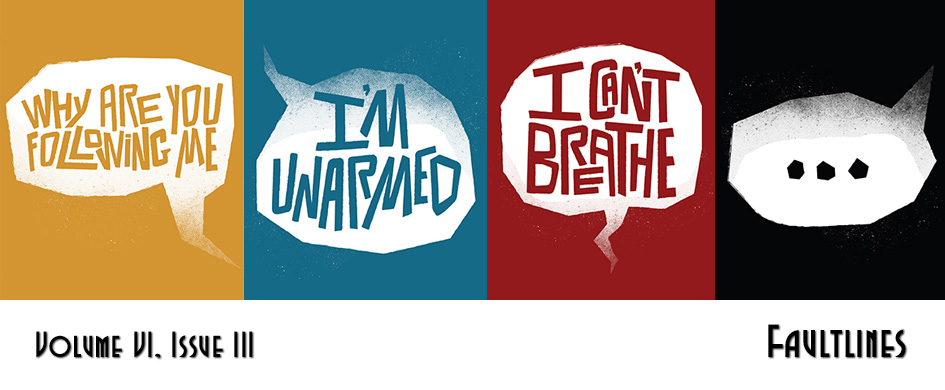Since my husband and I moved to North Hero Island last November, I wake each day well-held by the still morning. Tranquility is our neighbor. With a population of a little more than eight hundred, uninvited noise is a rare occurrence. That can’t be said for the greater Burlington area, the largest population cluster in Vermont, where we lived for sixteen years before moving to this remote hamlet an hour north. For sixteen years we were city dwellers, which came with its benefits: walking, biking, or bus-distance to restaurants, grocery stores, the post office. The main drawback, at least for me, was noise pollution. Mufflerless motorcycles, sirens, the squeal of air brakes, low-flying helicopters. Then came the most traumatizing noise-maker of all– the F-35 Lightning II.
I remember the day well, when the first of what would soon be twenty F-35s landed at Burlington International Airport – less than a mile from our home. I was driving in the direction of the airport when a screeching hiss, combined with the bomb-blast of thunder, forced me to pull over to the side of the road. My fight-or-flight system kicked in, and my hand went for the door handle. My instinct was to run as fast as I could from what I believed to be a terrorist attack. Or was it a plane about to crash, I thought. Once my nervous system released its excess voltage, I dared to look out the window, and saw a gray bullet streaking across the blue sky. It was then, and only then, when I realized the nerve-deep screech was not an attack or plane about to crash. An F-35 had just taken off.
There’s a good reason why my nervous system is easily shocked: a traumatic brain injury. It happened seventeen years ago, when an out-of-control driver ran me down. Even though it’s been seventeen years, the trauma lingers. Boom, boom, boom – bodies hitting the pavement each time a siren blares or a car backfires. The body remembers. And so does the mind – it is a compulsive time traveler, flitting from the present to the future and venturing unwelcomed into the past.
It’s no wonder that someone with a brain injury and post-traumatic stress disorder reacts with such utter terror when an F-35 takes off. Praised by its maker Lockheed Martin, the giant of all weapons corporations, as the “most lethal fighter jet in the world,” the aircraft weighs in empty at 29,300 pounds. And it is just one of a long list of fighter jets capable of flying at supersonic speed, meaning it can break the sound barrier. Meaning it can produce sonic booms, ear-rupturing sound waves that persist along the flight path of the jet travelling at or above speeds of 770 miles per hour. The top speed of the gray bullet: 1200 miles per hour.
The F-35 has been measured at peak noise levels of 121 decibels, levels deemed by the federal government far beyond tolerable for anyone, with or without a brain injury, to bear. The noise is violent, a threat. A sonic boom – 200 decibels – can happen anytime, and without warning. For reference, blowing up one pound of dynamite from fifteen feet away sends out an explosive 180 decibels. So it comes as no surprise that in 1973 the Federal Aviation Administration prohibited commercial supersonic jets from flying over the United States. Three years later, due to concerns about noise pollution, the Port Authority of New York and New Jersey banned the 1400-mile-an-hour Concorde from landing at JFK International Airport. But, alas, after a protracted and impassioned face-off between the operators of the Concorde, and airport officials, the community, and political representatives, the U.S. Supreme Court rejected the ban. According to The Journal of Air Law and Commerce, the Port Authority’s “conduct” was “unreasonable, discriminatory, unfair, and an impingement on commerce.” Due to the noise, the Concorde eventually stopped flights to other destinations, but the airline continued its service to New York for another twenty-six years. Twenty-six years of New Yorkers bracing for the next sonic boom – the next detonation of unreasonable, discriminatory, and unfair aggression.
Even while indoors, the noise threatens – a sustained assault on the ears, the brain, the psyche. When a squadron of four or eight F-35s take off the explosion of noise terrorizes babies and dogs, kills conversations, puts an end to Zoom gatherings, shakes walls and windows.
One Burlington woman suffering from an anxiety disorder told a local news reporter that her “insides rattle” the moment an F-35 roars overhead. “There’s no escaping.”
Boom, boom, boom. No, there is no escaping.
Not for the many parents and children working or studying from home during the COVID-19 pandemic.
Not for many of the 6,000 plus people living in the “noise zone” – areas noise exposure maps show to be incompatible with “residential living.”
Not for the 1500 children or the low-income workers and minorities afflicted by the blast of an F-35 taking off morning and afternoon, late at night, on weekends.
There is no escaping the boom for more than 3,000 people living in Winooski. The airport’s runway points straight at the city, the most densely populated and ethnically diverse working-class community in Vermont. Some residents have shared with the media all kinds of health problems: vertigo, nausea, chronic ringing in the ears.
There is no sanctuary for Winooski’s re-settled refugees from Bhutan, Bosnia, Burundi, Congo, Nepal, Rwanda, Somalia, and Sudan, those who once lived in exile or who fled the harrowing violence from their native war-torn countries. Many refugees came to Winooski in search of work, safety, stability – a future. They pack our groceries, drive us in their taxi-cabs to the airport, deliver Grubhub dinners to our doorsteps, sweep and mop our hospital rooms’ floors. They work long hours to pay rent, feed their children, keep the lights on and the heat running during Vermont’s eternal winters.
Unlike John and I, who had the means to move to a quiet corner of the state where stillness is abundant, Winooski’s refugees don’t have a choice. Trapped in the flight-path of the F-35s, they don’t have the financial resources to flee the noise trauma battering their psyche for a tormenting twenty minutes, four, five times a day. They do not know the howl of a fox during mating season, the singular sound of rustling leaves as they pirouette to the forest floor, or the sense of awe when in the presence of a frozen lake singing a vibrato as it contracts and expands.
So the refugees remain, and endure.
Yet, the body remembers. The mind remembers. The sound of violence. Of war. Boom, boom, boom. The wounds from war sting, weep, throb, even years later. The throb of torture, of persecution, of imprisonment, of bombings. Trauma is persistently cruel.
Each time an F-35 takes off, I imagine many refugees don’t hear what some call the “sound of freedom” but the shrill echo of helplessness, of fear. Fear of being wounded once again – this time brought on by a war machine savage in its mission to maim and kill.
The F-35’s stealth design makes it the world’s dominant destroyer, performing aerial reconnaissance missions, air defense, and ground and electronically controlled attacks, all while going undetected by enemy aircraft. And it is nuclear capable. Combined with its stealth technology, the accuracy of its bomb makes the F-35 a first strike nuclear weapon. The current F-35 models in Vermont are not nuclear armed, but they can be at any time. And we might never know – until the first preemptive strike. As Lockheed Martin so proudly boasts about the F-35’s ability to take down the enemy, “By the time they can hear you, it’s too late for them to react.” Not only “they” but us, we.
The F-35 is a weapon of mass destruction. Mass destruction as in the number of lives extinguished by a weapon carrying a nuclear bomb three times more explosive than “Little Boy” dropped on Hiroshima.
Mass destruction as in the number of people potentially left dead or with lasting injuries when the landing gear collapses, when a fan blade in the plane’s engine overheats and cracks, or when a fatigued and distracted pilot lands the jet at excessive speed. All three incidents have happened: one in 2020 at Utah’s Hill Air Force Base; another in 2014 at Eglin Air Force Base. It was six years after that incident when the fatigued pilot lost control of the F-35, again at Eglin. Just four days earlier, an F-22, also a fifth-generation fighter jet, crashed at the same location. All three pilots were lucky to have survived, the pilot of the 2014 crash barely retreating from the cockpit as smoke engulfed the plane in a thick black cloud.
Mass destruction as in the impact on the environment. One of these gas-guzzling jets alone burns 2400 gallons of fuel per hour. Twenty-four hundred gallons – enough to fill 200 Honda Civics.
The F-35 is a threat to public health, and damage could be long-term. Damage as in hearing loss with exposure to sound levels of 115 decibels for twenty-eight seconds. Damage as in heart disease, high blood pressure, increased risk for heart attack. Children bear the brunt of the blow: those with learning disabilities, the fetus, babies and infants born prematurely. A Cornell University study showed decisive proof of increased stress hormone levels in children exposed to the persistent roar of the F-35s. The Air Force Environmental Impact Statement even acknowledges the repercussions: Every facet of learning – reading, attention, problem solving, memory, and language comprehension – is sacrificed by both “the extreme noise blasts directly hitting children thousands of times a year as they grow up and by the multiple daily interruptions in speech in the classroom.”
During the late spring and summer months, children sit at their desks at home or in the classroom, the windows open, relieving them of the claustrophobic heat. But there is no relief, no protection from the assault, or enough insulation to dull the roar of war. At South Burlington’s Chamberlain Elementary School, students and teachers are forced to take a “Chamberlain Pause” when military planes take off. A teacher raises an index finger, gesturing the pause. All learning ceases. A student’s science presentation, a poetry reading, or show-and-tell come to a startling stop. Emerging voices are choked silent.
If only the students could escape the boom, boom, boom, they could enjoy the chorus of bird prattle, of laughter as they play tag or hop-scotch during school recess, or the rewarding snap when picking green beans from the school’s garden.
If only we, the fortunate and unfettered, were to amplify all the voices gone unheard, listen to the stories of the anguished, the trapped, the remote-working parents and students isolated during the pandemic, they would no longer be smothered by the enemy. Then they would know a new breed of silence, the kind of silence that rings of unadulterated freedom.


